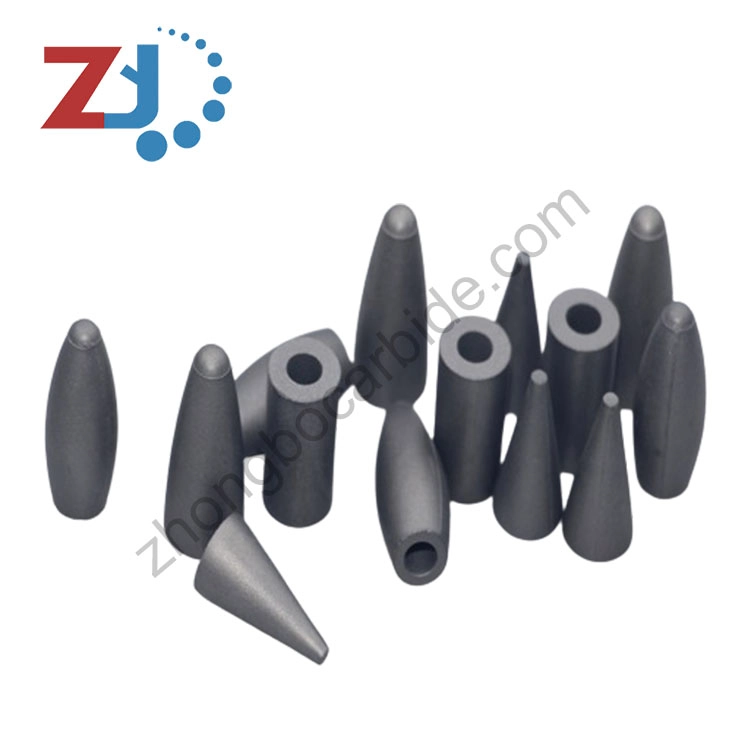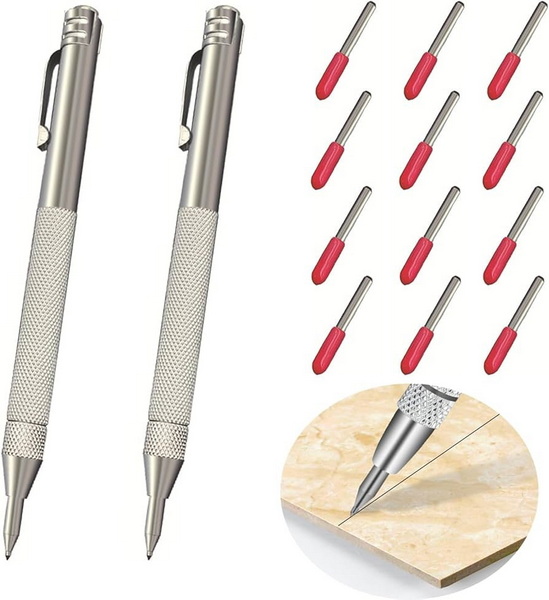Content Menu
● Introduction
● What is a Tungsten Carbide Scribe?
● Can You Use Tungsten Carbide Scribes on Glass?
>> Advantages of Using Tungsten Carbide Scribes on Glass
>> How to Use a Tungsten Carbide Scribe on Glass
● Applications of Tungsten Carbide Scribes in Glasswork
>> 1. Stained Glass Projects
>> 2. Engraving and Etching
>> 3. Fusing Glass
>> 4. Glass Cutting
>> 5. Jewelry Making
>> 6. Scientific and Laboratory Use
● Tips and Tricks
● Maintenance of Tungsten Carbide Scribes
● Conclusion
● FAQ
>> 1. What materials can I use a tungsten carbide scribe on?
>> 2. How do I maintain my tungsten carbide scribe to ensure it lasts longer?
>> 3. Can I use a tungsten carbide scribe for engraving detailed designs on glass?
>> 4. Is there a significant risk of breaking the glass when using a tungsten carbide scribe, and how can I minimize it?
>> 5. Where can I purchase a high-quality tungsten carbide scribe, and what should I look for when buying one?
● Citations:
Introduction
Tungsten carbide scribes are invaluable tools in various applications, particularly when precision and durability are paramount. This article delves into the capabilities of tungsten carbide scribes on glass, exploring their effectiveness, advantages, detailed usage techniques, maintenance tips, and diverse applications within glasswork. We will also provide illustrative images and a comprehensive FAQ section to address common queries.

What is a Tungsten Carbide Scribe?
A tungsten carbide scribe is a handheld instrument distinguished by its sharp tip, crafted from tungsten carbide – a compound celebrated for its exceptional hardness and wear resistance. These scribes are engineered to mark or score surfaces without causing substantial damage, enabling users to create precise lines and markings. Their versatility makes them suitable for a broad spectrum of materials, including:
- Glass
- Metal
- Plastic
- Wood
- Ceramic
The fineness of the tungsten carbide tip facilitates intricate detailing, making it a favorite among artists, craftsmen, and professionals in fields such as glasswork, metal fabrication, and jewelry making. Its ergonomic design ensures ease of use, resembling a pen, which allows for intuitive handling and control.
Tungsten Carbide Scribe
Can You Use Tungsten Carbide Scribes on Glass?
Indeed, tungsten carbide scribes are highly effective when used on glass. The inherent hardness of the tungsten carbide enables it to score the glass surface cleanly, without causing undesirable chipping or shattering, provided the correct technique is employed. Here's an in-depth look at their advantages and usage on glass:
Advantages of Using Tungsten Carbide Scribes on Glass
1. Precision: The hallmark of a tungsten carbide scribe is its precision. The fine tip allows for the creation of highly detailed work, making it ideally suited for intricate designs and patterns. Whether you're a stained glass artist needing precise cuts or an engraver adding delicate details, the scribe delivers accuracy.
2. Durability: Tungsten carbide is exceptionally resistant to wear, guaranteeing the tool maintains its sharpness and effectiveness over extended use. Unlike other materials that may dull quickly, tungsten carbide withstands repeated use, reducing the need for frequent replacements.
3. Versatility: Beyond glass, these scribes can mark a variety of materials, making them a versatile addition to any toolkit. This versatility extends their utility beyond specialized tasks, making them useful in both professional and hobbyist settings.
4. Ease of Use: Designed to mimic the feel of a pen, tungsten carbide scribes offer intuitive handling. This familiar feel allows for seamless integration into workflows, minimizing the learning curve.
How to Use a Tungsten Carbide Scribe on Glass
Achieving clean and effective results when using a tungsten carbide scribe on glass requires adherence to specific techniques:
1. Preparation is Key:
- Clean the Surface: Ensure the glass surface is impeccably clean and entirely free from dust, oils, or any other contaminants. Even the smallest particle can interfere with the scoring process.
- Secure the Glass: Place the glass on a stable, non-slip surface to prevent movement during scoring.
2. Marking Technique:
- Grip and Posture: Hold the scribe as you would a pen, ensuring a comfortable and secure grip.
- Pressure Control: Apply light, consistent pressure as you move the scribe along the desired line. Avoid the temptation to press too hard, as excessive force can fracture the glass.
- Consistent Motion: Maintain a smooth, uninterrupted motion along the entire line to ensure an even score.
3. Scoring:
- Single vs. Multiple Passes: For thinner glass, a single, well-executed pass may suffice. However, for thicker glass, scoring the line multiple times can deepen the cut and facilitate a cleaner break.
- Audible Feedback: Listen for a consistent scratching sound, which indicates the scribe is properly scoring the glass.
4. Breaking the Glass:
- After Scoring: After scoring the glass, apply gentle pressure along the scored line to initiate the break. You can use specialized glass breaking pliers or simply apply pressure by hand.
- Safety First: Always wear safety glasses to protect your eyes from any potential shards.

Applications of Tungsten Carbide Scribes in Glasswork
Tungsten carbide scribes find extensive use in diverse glassworking applications, including:
1. Stained Glass Projects
Stained glass artists rely on tungsten carbide scribes to create accurate lines when cutting pieces of glass. The precision afforded by these scribes is essential for achieving intricate designs that fit together flawlessly. Whether it's replicating historical patterns or creating modern abstract designs, the scribe plays a pivotal role.
2. Engraving and Etching
Scribes can also be used for engraving designs onto glass surfaces. This technique is popular for creating personalized gifts or decorative items. The fine tip of the scribe enables the creation of detailed monograms, decorative patterns, or even intricate artwork on glass surfaces.
3. Fusing Glass
In glass fusing projects, scribes help mark the precise areas where different pieces of glass will be joined, ensuring proper alignment during the fusing process. Accurate marking prevents misalignments and ensures that the finished piece meets the artist's expectations.
4. Glass Cutting
In professional glass cutting, these scribes are used to precisely score glass sheets before breaking them into specific dimensions. This is common in the manufacturing of windows, mirrors, and other glass products where accurate cuts are critical.
5. Jewelry Making
Glass beads and pendants often require precise markings for further embellishments. Tungsten carbide scribes allow jewelers to add intricate designs or mark locations for drilling holes, adding to the aesthetic appeal and functionality of glass jewelry.
6. Scientific and Laboratory Use
In laboratory settings, tungsten carbide scribes can be used to mark glassware, slides, or other scientific equipment for identification purposes. The marks are resistant to chemicals and high temperatures, making them ideal for such environments.
Tips and Tricks
1. Use a Guide: For straight lines or complex shapes, use a ruler, template, or stencil as a guide to maintain accuracy.
2. Practice Makes Perfect: Practice on scrap glass before working on your final piece to get a feel for the right amount of pressure and technique.
3. Lubrication: Some artists recommend applying a thin layer of cutting oil to the scribe tip for smoother scoring, especially on thicker glass.
Maintenance of Tungsten Carbide Scribes
Proper maintenance is crucial for prolonging the lifespan and optimizing the performance of your tungsten carbide scribe:
- Cleaning: Always wipe the tip after each use to remove any glass debris or residue. A soft cloth or brush works best.
- Storage: Store the scribe in a protective case or sheath when not in use to prevent accidental damage to the tip.
- Handle with Care: While tungsten carbide is durable, the scribe can still be damaged if dropped or mishandled.
- Avoid Abrasive Materials: Do not use abrasive cleaning materials on the tip, as they can scratch or dull the carbide.
Conclusion
Tungsten carbide scribes are indispensable tools for anyone working with glass. Their precision, durability, and versatility make them essential for artists, craftsmen, and professionals alike. Mastering the techniques outlined in this article, combined with proper maintenance, will enable users to achieve outstanding results in their glasswork endeavors. Whether you are cutting intricate stained glass patterns, creating personalized engravings, or fusing glass pieces, the tungsten carbide scribe is a reliable companion that delivers accuracy and consistency.

FAQ
1. What materials can I use a tungsten carbide scribe on?
Tungsten carbide scribes are exceptionally versatile and can be used on a range of hard materials. Besides glass, they are effective on metal, plastic, wood, ceramic, and even stone. However, it's crucial to remember that the technique and pressure applied may need to be adjusted depending on the specific material.
2. How do I maintain my tungsten carbide scribe to ensure it lasts longer?
To ensure longevity, regular maintenance is key. Always clean the tip after each use with a soft cloth to remove any debris. Store it in a protective case to prevent damage. Avoid dropping it, as the tip can chip or break. Regularly inspect the tip for any signs of wear and consider professional sharpening if needed.
3. Can I use a tungsten carbide scribe for engraving detailed designs on glass?
Absolutely. Tungsten carbide scribes are perfect for engraving detailed designs on glass. Their fine tips allow for precise lines and intricate patterns. Remember to use light, consistent pressure and practice on scrap glass to perfect your technique before working on your final piece.
4. Is there a significant risk of breaking the glass when using a tungsten carbide scribe, and how can I minimize it?
While there's always a slight risk, it can be minimized by using the correct technique. Apply light, even pressure along the scored line. Ensure the glass is clean and properly supported. Avoid pressing too hard, which can cause immediate breakage. Scoring multiple times with light pressure is safer than one heavy pass.
5. Where can I purchase a high-quality tungsten carbide scribe, and what should I look for when buying one?
High-quality tungsten carbide scribes can be purchased at hardware stores, art supply stores, and online retailers specializing in tools for artists and craftsmen. Look for scribes with ergonomic handles for comfortable use, a securely mounted tungsten carbide tip, and positive reviews from other users. Consider purchasing from reputable brands known for their quality and durability.
Citations:
[1] https://eternaltools.com/products/carbide-scriber
[2] https://www.ee.cityu.edu.hk/~gchen/pdf/Writing.pdf
[3] https://www.agarscientific.com/glass-scribe-with-pocket-clip
[4] https://www.sohu.com/a/303117140_99920814
[5] https://www.renaissancegraphics.com/product/tungsten-carbide-scriber/
[6] https://jphe.amegroups.org/article/view/4265/10863
[7] https://generaltools.com/tungsten-carbide-point-scriber-etching-pen-with-magnet
[8] https://blog.csdn.net/qq_34917728/article/details/125122327
















